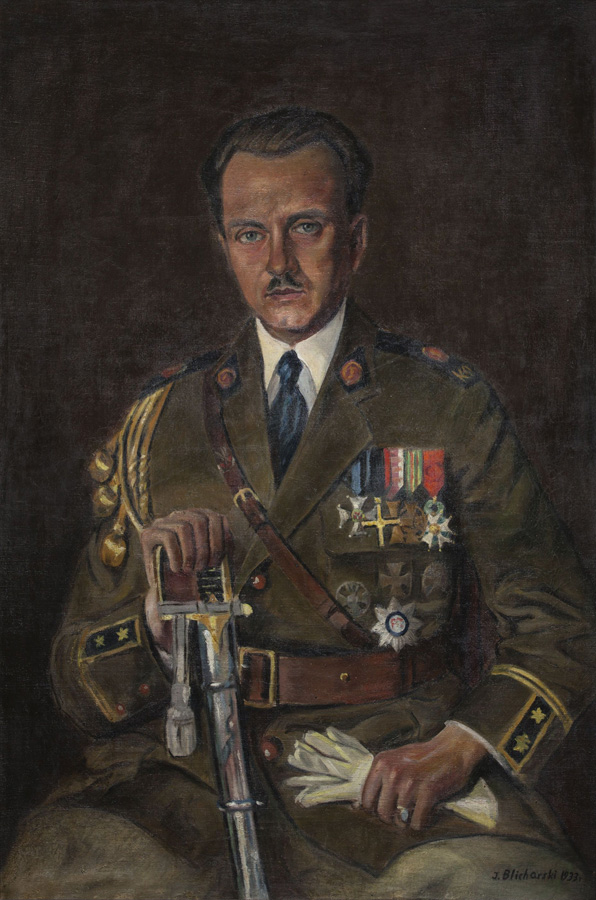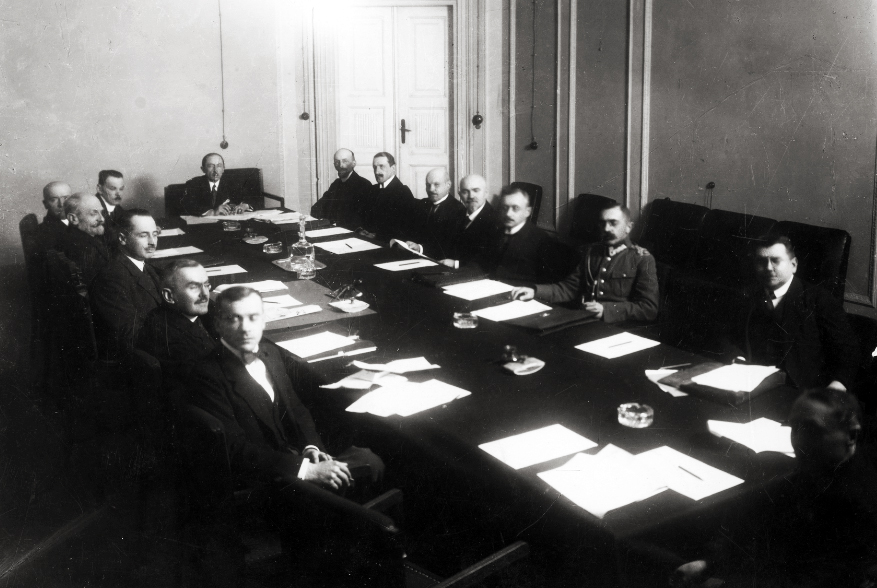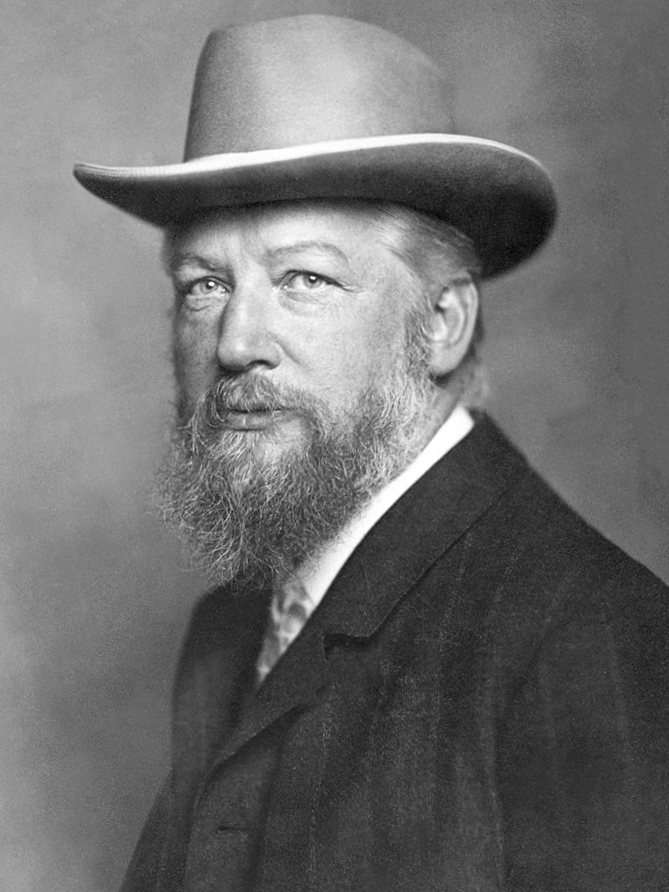|
Marian Zyndram-Kościałkowski
Marian Zyndram-Kościałkowski (; 16 March 1892, Pandėlys, Kovno Governorate – 12 April 1946 Brookwood, Surrey) was a Polish politician, freemason and military officer who served as voivode of Białystok Voivodeship (1919-1939), Białystok Voivodeship in 1930-1934, Mayor of Warsaw in 1934 and 27th Prime Minister of Poland from 1935 to 1936. Early years Marian Zyndram-Kościałkowski was born in his family’s real estate of Pandėlys, located in the Novoalexandrovsky Uyezd of the Kovno Governorate of the Russian Empire (today Lithuania), to Karol and Maria Budrewicz. He came from a szlachta, noble background that used the Syrokomla coat of arms. In 1903, Marian went to Saint Petersburg where he attended middle and high school. After graduation in 1910, he began studying at the local Neurological Institute. Also, he studied agriculture at Riga Technical University. In 1911, Zyndram-Kościałkowski became a member of the Union of Active Struggle (ZWC), Polish independence org ... [...More Info...] [...Related Items...] OR: [Wikipedia] [Google] [Baidu] |
Prime Minister Of Poland
The President of the Council of Ministers ( pl, Prezes Rady Ministrów, lit=Chairman of the Council of Ministers), colloquially referred to as the prime minister (), is the head of the cabinet and the head of government of Poland. The responsibilities and traditions of the office stem from the creation of the contemporary Polish state, and the office is defined in the Constitution of 1997. According to the Constitution, the president nominates and appoints the prime minister, who will then propose the composition of the Cabinet. Fourteen days following their appointment, the prime minister must submit a programme outlining the government's agenda to the Sejm, requiring a vote of confidence.Article 154, para. 2 Conflicts stemming from both interest and powers have arisen between the offices of President and Prime Minister in the past. The incumbent and seventeenth prime minister is Mateusz Morawiecki of the Law and Justice party. Morawiecki replaced Prime Minister Beata Szydło, ... [...More Info...] [...Related Items...] OR: [Wikipedia] [Google] [Baidu] |
Freemason
Freemasonry or Masonry refers to fraternal organisations that trace their origins to the local guilds of stonemasons that, from the end of the 13th century, regulated the qualifications of stonemasons and their interaction with authorities and clients. Modern Freemasonry broadly consists of two main recognition groups: * Regular Freemasonry insists that a volume of scripture be open in a working lodge, that every member profess belief in a Supreme Being, that no women be admitted, and that the discussion of religion and politics be banned. * Continental Freemasonry consists of the jurisdictions that have removed some, or all, of these restrictions. The basic, local organisational unit of Freemasonry is the Lodge. These private Lodges are usually supervised at the regional level (usually coterminous with a state, province, or national border) by a Grand Lodge or Grand Orient. There is no international, worldwide Grand Lodge that supervises all of Freemasonry; each Grand Lod ... [...More Info...] [...Related Items...] OR: [Wikipedia] [Google] [Baidu] |
Nom De Guerre
A pseudonym (; ) or alias () is a fictitious name that a person or group assumes for a particular purpose, which differs from their original or true name (orthonym). This also differs from a new name that entirely or legally replaces an individual's own. Many pseudonym holders use pseudonyms because they wish to remain anonymous, but anonymity is difficult to achieve and often fraught with legal issues. Scope Pseudonyms include stage names, user names, ring names, pen names, aliases, superhero or villain identities and code names, gamer identifications, and regnal names of emperors, popes, and other monarchs. In some cases, it may also include nicknames. Historically, they have sometimes taken the form of anagrams, Graecisms, and Latinisations. Pseudonyms should not be confused with new names that replace old ones and become the individual's full-time name. Pseudonyms are "part-time" names, used only in certain contexts – to provide a more clear-cut separation between one's ... [...More Info...] [...Related Items...] OR: [Wikipedia] [Google] [Baidu] |
Polish Military Organisation
The Polish Military Organisation, PMO ( pl, Polska Organizacja Wojskowa, POW) was a secret military organization which formed during World War I (1914-1918). Józef Piłsudski founded the group in August 1914; it adopted the name ''POW'' in November 1914. It aimed to gather intelligence and to sabotage the enemies of the Polish people. Piłsudski used the POW to act independently from his cautious Austro-Hungarian supporters, and it became an important, if somewhat lesser known, counterpart to the Polish Legions. Its targets included the Russian Empire in the early phase of the war, and the German Empire later. Its membership rose from a few hundred in 1914 to over 30,000 in 1918. History Intelligence and training The Polish Military Organization (PMO) can be traced to formations of August 1914 or even earlier, but it was officially founded in November 1914, as a merger of two previously-existing youth para-military organisations: the Drużyny Strzeleckie and the Związek Strz ... [...More Info...] [...Related Items...] OR: [Wikipedia] [Google] [Baidu] |
Warsaw
Warsaw ( pl, Warszawa, ), officially the Capital City of Warsaw,, abbreviation: ''m.st. Warszawa'' is the capital and largest city of Poland. The metropolis stands on the River Vistula in east-central Poland, and its population is officially estimated at 1.86 million residents within a greater metropolitan area of 3.1 million residents, which makes Warsaw the 7th most-populous city in the European Union. The city area measures and comprises 18 districts, while the metropolitan area covers . Warsaw is an Alpha global city, a major cultural, political and economic hub, and the country's seat of government. Warsaw traces its origins to a small fishing town in Masovia. The city rose to prominence in the late 16th century, when Sigismund III decided to move the Polish capital and his royal court from Kraków. Warsaw served as the de facto capital of the Polish–Lithuanian Commonwealth until 1795, and subsequently as the seat of Napoleon's Duchy of Warsaw. Th ... [...More Info...] [...Related Items...] OR: [Wikipedia] [Google] [Baidu] |
Polish Legions In World War I
The Polish Legions ( pl, Legiony Polskie) was a name of the Polish military force (the first active Polish army in generations) established in August 1914 in Galicia soon after World War I erupted between the opposing alliances of the Triple Entente on one side (comprising the British Empire, the French Republic and the Russian Empire); and the Central Powers on the other side, comprising the German Empire and Austria-Hungary. The Legions became "a founding myth for the creation of modern Poland" in spite of their considerably short existence; they were replaced by the Polish Auxiliary Corps ( pl, Polski Korpus Posiłkowy) formation on 20 September 1916, merged with Polish II Corps in Russia on 19 February 1918 for the Battle of Rarańcza against Austria-Hungary, and disbanded following the military defeat at the Battle of Kaniów in May 1918,WIEM Encyklopedia (2015)Polski Korpus Posiłkowyat PortalWiedzy.onet.pl against imperial Germany. General Haller escaped to France to form ... [...More Info...] [...Related Items...] OR: [Wikipedia] [Google] [Baidu] |
World War I
World War I (28 July 1914 11 November 1918), often abbreviated as WWI, was one of the deadliest global conflicts in history. Belligerents included much of Europe, the Russian Empire, the United States, and the Ottoman Empire, with fighting occurring throughout Europe, the Middle East, Africa, the Pacific, and parts of Asia. An estimated 9 million soldiers were killed in combat, plus another 23 million wounded, while 5 million civilians died as a result of military action, hunger, and disease. Millions more died in genocides within the Ottoman Empire and in the 1918 influenza pandemic, which was exacerbated by the movement of combatants during the war. Prior to 1914, the European great powers were divided between the Triple Entente (comprising France, Russia, and Britain) and the Triple Alliance (containing Germany, Austria-Hungary, and Italy). Tensions in the Balkans came to a head on 28 June 1914, following the assassination of Archduke Franz Ferdin ... [...More Info...] [...Related Items...] OR: [Wikipedia] [Google] [Baidu] |
Union Of Active Struggle
The Union of Active Struggle ( pl, Związek Walki Czynnej, ZWC), also translated as ''Union for Active Struggle'' and ''Union for Active Resistance'',Thus rendered in Richard M. Watt, ''Bitter Glory: Poland and Its Fate, 1918 to 1939'', p. 37. Watt writes: "Soon after Piłsudski's return to Galicia from the Bezdany raid, a new type of Polish military organization appeared.... Its name was the "Union for Active Resistance" and it was first formed in Lwów under the direct leadership of one of Piłsudski's closest disciples... Kazimierz Sosnkowski. The function of the organization was to secretly train Poles in guerrilla warfare. When the PPS refused to supply funds for such an operation, Piłsudski himself took over its direction and partly funded it with money from the Bezdany raid." was a Polish secret military organization founded in June 1908 in Lwów by Józef Piłsudski, Marian Kukiel, Kazimierz Sosnkowski and Władysław Sikorski, all members of the Combat Organization o ... [...More Info...] [...Related Items...] OR: [Wikipedia] [Google] [Baidu] |
Riga Technical University
Riga Technical University (RTU) ( lv, Rīgas Tehniskā universitāte) is the oldest technical university in the Baltic countries established on October 14, 1862. It is located in Riga, Latvia and was previously known as 'Riga Polytechnical Institute' and 'Riga Polytechnicum'. History Riga Polytechnical Institute (1862–1918) Riga Polytechnicum was first established in 1862 and was the first poly technical institute in Imperial Russia. It offered degrees in agriculture, chemistry, engineering, mechanics, trade and architecture, with education in German. In addition to four technical faculties (architecture, engineering, mechanical engineering, chemistry), the polytechnic also included an agricultural and a commercial faculty. The first lecturers came from Germany, Switzerland and Austria-Hungary. The language of instruction was German. Between 1863 and 1869, the number of students grew from sixteen to ninety. In 1869 the polytechnic moved into a new building. Since there was a l ... [...More Info...] [...Related Items...] OR: [Wikipedia] [Google] [Baidu] |
Saint Petersburg
Saint Petersburg ( rus, links=no, Санкт-Петербург, a=Ru-Sankt Peterburg Leningrad Petrograd Piter.ogg, r=Sankt-Peterburg, p=ˈsankt pʲɪtʲɪrˈburk), formerly known as Petrograd (1914–1924) and later Leningrad (1924–1991), is the second-largest city in Russia. It is situated on the Neva River, at the head of the Gulf of Finland on the Baltic Sea, with a population of roughly 5.4 million residents. Saint Petersburg is the fourth-most populous city in Europe after Istanbul, Moscow and London, the most populous city on the Baltic Sea, and the world's northernmost city of more than 1 million residents. As Russia's Imperial capital, and a historically strategic port, it is governed as a federal city. The city was founded by Tsar Peter the Great on 27 May 1703 on the site of a captured Swedish fortress, and was named after apostle Saint Peter. In Russia, Saint Petersburg is historically and culturally associated with t ... [...More Info...] [...Related Items...] OR: [Wikipedia] [Google] [Baidu] |
Syrokomla Coat Of Arms
Syrokomla - is a Polish coat of arms. It was used by several szlachta The ''szlachta'' (Polish: endonym, Lithuanian: šlėkta) were the noble estate of the realm in the Kingdom of Poland, the Grand Duchy of Lithuania, and the Polish–Lithuanian Commonwealth who, as a class, had the dominating position in the ... families in the times of the Polish–Lithuanian Commonwealth. History According to the legend, the coat of arms was granted to certain knight named Syrokomla of Abdank coat of arms after he won a duel with a pagan Old Prussians, Old Prussian warrior in 1331 during the reign of Władysław I the Elbow-high, Ladislaus the Short. After this victory he was awarded with a right to add a golden cross to his coat of arms, to underline that he is one of the defenders of Christianity. Blazon Gules, Abdank coat of arms, Abdank (''W-shaped symbol'') Argent, with a cross Or (sometimes Argent) attached above. In the crest the symbol repeated. Notable bearers Notable bear ... [...More Info...] [...Related Items...] OR: [Wikipedia] [Google] [Baidu] |
Szlachta
The ''szlachta'' (Polish: endonym, Lithuanian: šlėkta) were the noble estate of the realm in the Kingdom of Poland, the Grand Duchy of Lithuania, and the Polish–Lithuanian Commonwealth who, as a class, had the dominating position in the state, exercising extensive political rights and power. Szlachta as a class differed significantly from the feudal nobility of Western Europe. The estate was officially abolished in 1921 by the March Constitution."Szlachta. Szlachta w Polsce" ''Encyklopedia PWN'' The origins of the ''szlachta'' are obscure and the subject of several theories. Traditionally, its members owned land (allods), [...More Info...] [...Related Items...] OR: [Wikipedia] [Google] [Baidu] |





